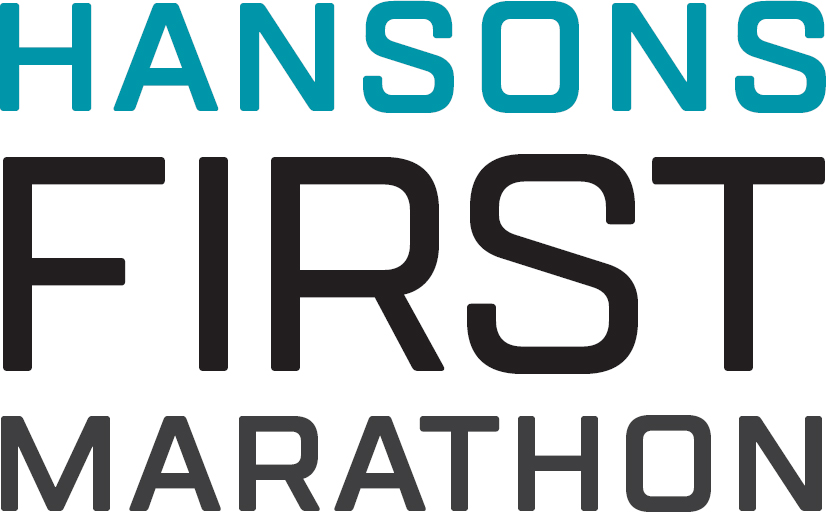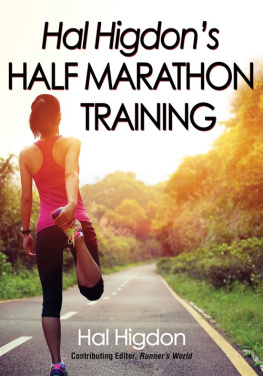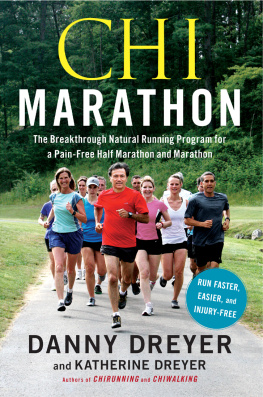

Copyright 2018 by Luke Humphrey
All rights reserved. Published in the United States of America by VeloPress, a division of Pocket Outdoor Media.

3002 Sterling Circle, Suite 100
Boulder, Colorado 803012338 USA
VeloPress is the leading publisher of books on endurance sports and is a division of Pocket Outdoor Media. Focused on cycling, triathlon, running, swimming, and nutrition/diet, VeloPress books help athletes achieve their goals of going faster and farther. Preview books and contact us at velopress.com.
Distributed in the United States and Canada by Ingram Publisher Services
The Library of Congress has cataloged the printed edition as follows:
Names: Humphrey, Luke, 1981- author. | Hanson, Keith, author. | Hanson, Kevin, author.
Title: Hansons first marathon: step up to 26.2 the Hansons way / Luke Humphrey with Keith and Kevin Hanson.
Description: Boulder, Colorado: VeloPress, [2018] | Includes bibliographical references and index.
Identifiers: LCCN 2018030678 (print) | LCCN 2018032735 (ebook) | ISBN 9781937716950 | ISBN 9781937715793 (pbk.: alk. paper)
Subjects: LCSH: Marathon runningTraining.
Classification: LCC GV1065.17.T73 (ebook) | LCC GV1065.17.T73 H855 2018 (print) | DDC 796.42/52dc23
LC record available at https:lccn.loc.gov/2018030678
Cover design by Pete Garceau
Cover photograph courtesy of MarathonFoto
Interior design by Megan Roy
Illustrations by Charlie Layton
v. 3.1
A note to readers: Double-tap on [illustrations/tables/training plans] to enlarge them. After art is selected, you may expand or pinch your fingers to zoom in and out.
CONTENTS
Theres no denying the mystique of the marathon. For many, it is the quintessential endurance event, at the top of bucket lists, running rsums, and lifetime achievement goals. Whatever your pace or finishing time, crossing the finish line of your first marathon can be as much a spiritual experience as a physical one, providing you with a profound sense of meaning, pride, and accomplishment. Despite all manner of newfangled endurance events popping up on race calendars each year, from Spartan races to zombie runs, the marathon remains the gold standard for human-powered locomotion. Entertaining the thought of running 26.2 miles on foot may scare the daylights out of you. Questions abound: Can I really run that far? How do I begin to train for something like that? Will it hurt? What if I fail?
Hopefully among those contemplations of self-doubt shine rays of hope and excitement. Thats how Big Goals workthey seem just outside our reach, which is precisely what makes them so alluring. The gravitational pull of the marathon is very strong for some of us. For others, it holds a spot in the maybe someday categorya goal that youd like to tackle at some point, but just havent yet found the time. If youre in that camp, the fact that youve picked up this book is a good sign that someday is a lot closer than you thought.
You certainly wont be alone. The marathons growing popularity has ushered in an ever-burgeoning number of participants. Todays marathon start lines are populated by all types of runners: hard-core veterans, yes, but also soccer moms and dads, fund-raisers, harriers, and weekend warriorsall on a mission to prove to themselves that they can do it. And guess what: They can. And so can you.
Most of us just need a place to startterra firma from which to make that initial leap into training for the 26.2-mile distanceand confidence about where were headed. Thats what this book is all about.
Who Should Run a Marathon?
When brothers Keith and Kevin Hanson, coaches and co-founders of the elite Hansons-Brooks Distance Project, first devised their marathon training plans back in 1991, the marathon scene looked dramatically different than it does today. Charity fund-raising for events was but a blip on the radar. Themed races were inconceivable. Carbo-loading involved strictly white pasta and bread. Running shoes were heavier. And moisture-wicking finisher T-shirts werent even a glimmer in the most experienced runners eye.
Statistics culled by Running USA provide an interesting window into how the marathon scene has evolved over the past several decades. For instance, in 1980, roughly 143,000 people ran a marathon. The majority of those runners were between 20 and 39 years old, and just 10 percent were women. By 1995, about the time the Hanson brothers penned their first Marathon Method schedules, those numbers had grown a bit. That year there were about 293,000 marathon finishers. The number of women participants had grown to 26 percent, and the number of runners in the masters category (age 40 and up) increased from 26 percent of the marathon running population in 1980 to 41 percent. By 2015, the marathon boasted more than 500,000 finishers for the previous two years, and has remained at that level since. The number of women participants nearly equals the number of men, and masters runners make up almost half of all finishers.
In addition to a wider demographic, the statistics show that overall pace has also changed dramatically. Todays marathoners are slower on average. In 1980, the average time for women was 4:02 and for men 3:32. By 1995, those numbers had slowed to 4:15 and 3:54 respectively and by 2015, we had become a nation of 4-hour marathoners, with women averaging 4:45 and men 4:20.
What do all these stats say about running marathons today? Prior to the first running boom in the 1970s, the runners who made up that small group of marathoners could only be described as hard-core. It was an insular group, logging many miles in solitary pursuit of their training goals. Back then, most people probably didnt know anyone who had runor even had ambitions to runa marathon.
Nowadays, there are not only thousands of additional races from which to choose, but also these races are billed as grand events. These arent your grandpas races, with 20 people racing each other sans water stops and fueling stations. Many marathons are extravagant affairs that garner millions in charity dollars and other revenue. The loneliness of the long-distance runner has made way for the nations most well-attended social club. And while there remain some purists who scoff at these developments, we would argue that the sport is better for it. The marathon is more inclusive and accessible, inviting a new generation of people to participate in an activity that has proven benefits for both body and mind. In the end, thats a good result for everyone involved. As the saying goes, a rising tide raises all boats whether your destination is a fund-raising goal, a personal best, or an Olympic berth.
The primary aim of this book is to show you that, regardless of experience, finishing a marathon is something just about anyone can accomplish. In these pages, you will learn how to do more than simply survive your first marathon and check it off the list. Rather, you will learn how to thrive, by not only learning best training practices, but also knowing what to anticipate during the process. Along with detailed explanations of why and how to log mileage and properly structure your training, we will dispel common myths and misconceptions and chart a course for a successful finish. Weve also polled experienced athletes on what they wish they had known leading up to their own first marathons in order to offer you the benefit of learning from others mistakes and triumphs.
Next page














